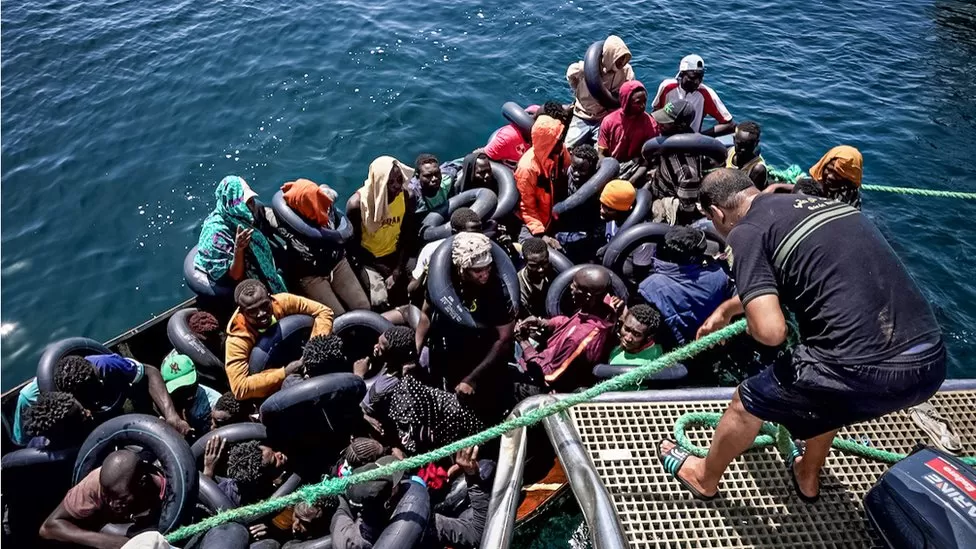On patrol with Tunisia’s coast guard: Nine boats in 24 hours

More than 180 people were rescued from what is now the world’s busiest migrant route into Europe wearing rubber rings, but without life jackets.
After boarding the national coast guard patrol boat from the Tunisian coastal city of Sfax, the radar intercepted its first signal within 30 minutes.
In tandem with two speed boats, these smaller, more agile vessels were deployed first to locate the migrant ship.
Upon finding them, their captain was ordered to shut down the engine and allow them to be towed back to the larger patrol vessel where six Tunisian coastguards were waiting to help.
Across the Mediterranean, Sfax is less than 200km from Lampedusa, an Italian island, which has long been a transit point for sub-Saharan Africans seeking to enter Europe illegally – and a hub for smugglers.
The migrants used to travel by road to Libya and then catch a boat to Greece.
After Libyan authorities deported thousands of migrants last year and intensified patrols along its coast, Tunisia became the preferred route for migrants seeking to travel to Europe.
To improve Tunisia’s border controls, search-and-rescue operations, and anti-smuggling initiatives, the European Commission offered $115 million (£90 million) in July.
The $115 million is part of a larger package of aid offered by the International Monetary Fund (IMF). Tunisia has not yet agreed to the terms of how the money will be spent.
In the first half of this year, 54,049 people were picked up by the Italian or Tunisian coastguard – more than double the number who attempted the crossing during the whole of 2022.
According to the UN, more than 2,000 lives have been lost in this year’s first month.
When 46 passengers disembarked from the towed migrant boat, the coast guards were met with anger.
One man shouted, “Let me go to Italy.”. Another yelled, “I will try again.”.
They told us it was their third and even fourth attempt to cross the sea from Ivory Coast and Guinea.
